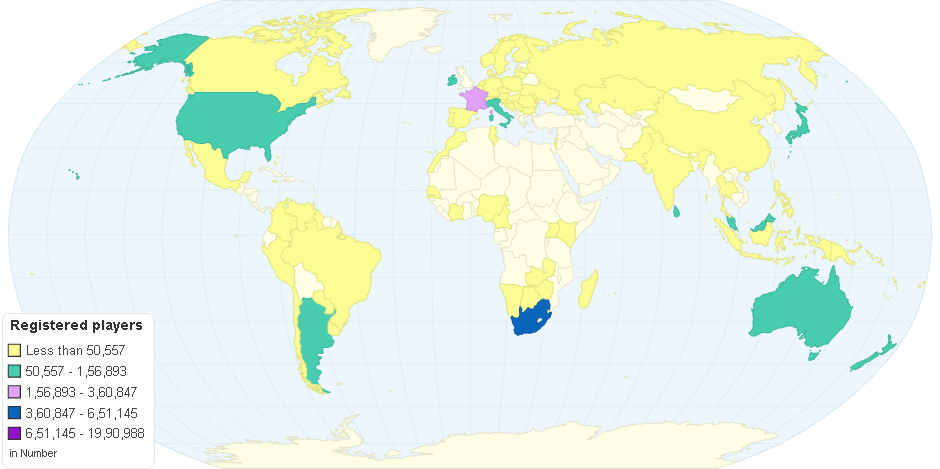This chart shows Rugby Union Playing Countries.
Rugby union, or simply rugby, is a contact team sport which originated in England in the first half of the 19th century.[3] One of the two codes of rugby football, it is based on running with the ball in hand. In its most common form, a game is between two teams of 15 players using an oval-shaped ball on a rectangular field with H-shaped goalposts on each try line.
World Rugby, originally the International Rugby Football Board (IRFB) and from 1998 to 2014 the International Rugby Board (IRB), has been the governing body for rugby union since 1886. Rugby union spread from the Home Nations of Great Britain and Ireland, and was absorbed by many of the countries associated with the British Empire. Early exponents of the sport included Australia, New Zealand, South Africa and France.
The origin of rugby football is reputed to be an incident during a game of English school football at Rugby School in 1823, when William Webb Ellis is said to have picked up the ball and run with it. Although the evidence for the story is doubtful, it was immortalised at the school with a plaque unveiled in 1895.Despite the doubtful evidence, the Rugby World Cup trophy is named after Webb Ellis.
Each country to have a union affiliated to the International Rugby Board (IRB), the world organisation that manages the game of rugby union. As well as listing the countries, it also shows the number of registered clubs playing in each country, official referees and the number of registered players broken down by gender and age group.
From the information supplied to the IRB by its union members, there are a total of 4,504,188 people who played organised rugby, though several countries have failed to supply details, and of this total only 852,866 are senior players. England alone claims 1,834,656 junior and youth players, almost 40 percent of the world's player total.
9 years ago

